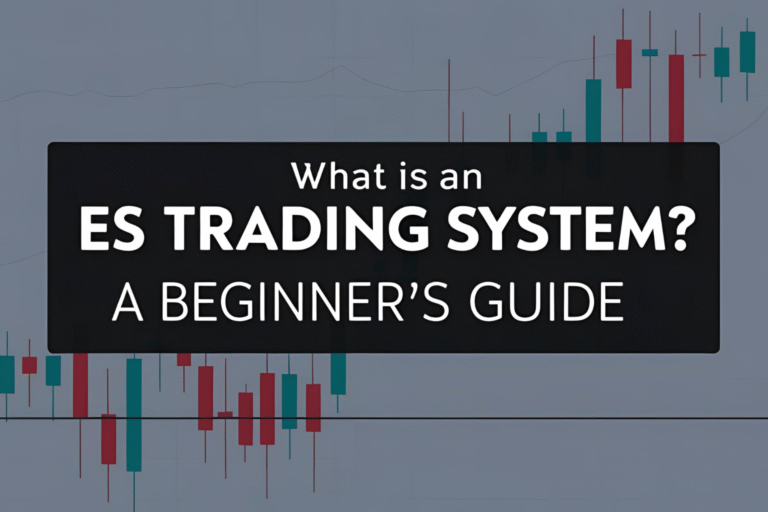ES Futures Contract Specifications Explained
Understanding the specifications of the ES futures contract is essential for any trader who wants to trade the E-mini S&P 500 confidently. These specs tell you everything from the contract size and tick value to trading hours and margin requirements.
This guide breaks down the complete ES futures contract specifications in a beginner-friendly way.
What Is the ES Futures Contract?
The ES futures contract is the E-mini version of the S&P 500 futures. It’s electronically traded on the CME and tracks the value of the S&P 500 Index. It is designed for active traders who want to trade the S&P 500 using leverage.
ES Futures Contract Specs
Here are the key specifications every trader should know:
| Specification | Details |
|---|---|
| Ticker Symbol | ES |
| Exchange | CME (Chicago Mercantile Exchange) |
| Contract Size | $50 × S&P 500 Index value |
| Tick Size | 0.25 index points |
| Tick Value | $12.50 per tick |
| Minimum Fluctuation | 0.25 index points |
| Point Value | 1 point = $50 (4 ticks × $12.50) |
| Initial Margin | ~$10,000 (depends on broker & volatility) |
| Day Trading Margin | As low as $500 with some brokers |
| Contract Months | March, June, September, December |
| Settlement | Cash settled |
| Last Trading Day | Third Friday of the contract month |
| Trading Hours | 6:00 PM – 5:00 PM (ET), Sunday to Friday |
| Daily Maintenance Break | 5:00 PM – 6:00 PM (ET) |
Tick Size and Value Explained
The minimum movement in ES futures is 0.25 index points. Since each point is worth $50, each tick equals:
0.25 × $50 = $12.50
If the price moves 1 point in your favor, that’s a $50 gain per contract. A 10-point move results in a $500 gain or loss, depending on your position.
Contract Expiry and Settlement
ES futures expire quarterly in March, June, September, and December. The final trading day is the third Friday of the contract month. These contracts are cash-settled, meaning there’s no physical delivery — just the cash value difference.
Trading Hours
ES futures trade nearly 24 hours a day from Sunday evening to Friday evening (ET), with a daily one-hour break:
- Open: Sunday 6:00 PM ET
- Close: Friday 5:00 PM ET
- Daily Break: 5:00 PM – 6:00 PM ET
This makes them ideal for global traders, including those in India.
Margins and Leverage
Brokers require traders to post margin to open and maintain positions:
- Initial Margin: Set by the exchange, usually ~$10,000
- Day Trading Margin: Varies widely (some as low as $500)
High leverage means profits can be significant — but so can losses. Always use risk management strategies like stop-loss orders.
Why Knowing These Specs Matters
Knowing the exact contract specs helps you:
- Plan trade sizes
- Set stop losses and targets based on tick size
- Avoid holding past expiration dates
- Choose the right contract month
- Prepare for overnight margin requirements
FAQs
1. What is the contract size of ES futures?
Each ES contract is worth $50 multiplied by the S&P 500 Index value.
2. What is the tick value of ES futures?
Each tick (0.25 index points) equals $12.50.
3. When do ES futures expire?
They expire quarterly — March, June, September, and December — on the third Friday.
4. What is the minimum margin to trade ES futures?
Initial margin is around $10,000, but day trading margin can be much lower with certain brokers.
5. Are ES futures cash-settled?
Yes, there is no delivery of physical assets; the contracts settle in cash.


